
THIS WEBSITE CONTAINS IMAGES OF TOBACCO. PLEASE LEAVE NOW IF YOU ARE UNDER THE AGE OF 18 YEARS OLD. PLEASE NOTE WE DO NOT SHIP TOBACCO PRODUCTS TO THE USA OR THE EUROPEAN UNION.
Confirm Age & Enter SiteChristmas lights are starting to brighten up the dark skies, and our hats and scarves are out for good; the festive period has officially begun! In this chilly weather, there isn’t much we enjoy more than cosying up by the fire with our favourite pipe, so why not gift one to your loved ones?
You don’t have to worry about beating the Christmas rush or what to buy, as we have compiled a list of the very best pipes for you to buy this festive season!
For a classic Christmas:
If you’re seeking a Christmas-specific pipe, the limited edition Dunhill Christmas Pipes are the first place to look. The Dunhill White Spot Maria Christmas Pipe 2013 is part of the 12-year theme The Nutcracker and the Mouse King, which began in 2011 and was completed in 2022. It is based on the characters of the children’s book The Nutcracker and the Mouse King and the famous ballet The Nutcracker.
The 2013 pipe is the third in the series and depicts Maria Stahlbaum, who owns the Nutcracker and with whom she experiences the most wondrous and exciting adventures. The pipe has a Shell Briar finish and features a Sterling Silver band intricately engraved with scrollwork and the name Maria.
The set also comes with a solid Sterling Silver pipe tamper, which depicts Maria holding her beloved Nutcracker in her arms. This is a highly collectable pipe set, with only 300 of each pipe worldwide. It comes with a numbered, limited edition certificate.
For the consulting detective:
When it comes to iconic pipe silhouettes, there are none more well-known than the Sherlock Holmes pipe! The Peterson Sherlock Holmes Original Sandblasted P-Lip Pipe is a tribute to the legendary detective, featuring a full-bodied pipe that captures the essence of Victorian elegance with its large, curved bowl and long, smooth stem.
Peterson is known for their exceptional craftsmanship; this pipe is made from premium briar wood with a sandblasted finish and features a P-Lip mouthpiece, which directs smoke upward, reducing tongue bite for a smoother, more enjoyable draw.
Whether you’re a fan of the consulting detective, a collector, or a lover of well-crafted pipes, the Peterson Sherlock Holmes Original Sandblasted P-Lip Pipe is the perfect blend of function and classic design, offering historical homage and expert craftsmanship.
For the casual collector:
If you’re after a pipe beautiful enough to display, but without the hefty price tag, a Savinelli pipe is a fantastic choice. The Savinelli Avorio Burgundy Pipe showcases Italian excellence with its flawless, smooth finish in rich burgundy, thanks to the premium Mediterranean briar’s natural beauty. These pipes are fantastically crafted and present a perfect blend of form and function, making them ideal for both collectors and daily smokers seeking a superior smoking experience alike.
For fans of Shakespeare:
Creating some of the most famous plays in history and forever changing the English language, it’s hard not to be a fan of William Shakespeare!
To celebrate the 450 year jubilee of Shakespeare’s birth, Dunhill White Spot have created a pipe to commemorate the playwright, which comes with a solid Sterling silver tamper shaped like a writing quill in an inkwell – similar to what he would have used to write his beloved plays. The Dunhill White Spot William Shakespeare Limited Edition Cumberland Pipe itself also features a metal band engraved with Shakespeare’s signature.
For the stocking filler:
If you’re after something more cheap and cheerful for a stocking filler or Secret Santa gift, then the Missouri Meerschaum 690 Legend Bent Corn Cob Pipe is an ideal choice. These classic Corn Cob pipes were made famous by Popeye and are crafted from real corn cobs, which have been dried for up to 2 years.
They can actually be smoked and offer a fairly cool smoke with a natural sweetness. Corn cob pipes are naturally porous, which allows the pipe to breathe while smoking.
For the collector:
For the pipe collector, the Dunhill White Spot Namiki Quail Billiard Pipe is a must. The detailing of the artwork on this Billiard Pipe is incredible, with each pipe handmade using the traditional Japanese art method of Hira Maki-e.
The pipe features the image of a quail, on a jet-black lacquered base, with a gold-plated accent. Only 100 of these pipes have been created, with this one being the 87th.
If you’re looking for more present ideas, check out Havana House for the best pipe Christmas presents that you can buy this year. Not found the perfect gift yet? Check out our Christmas Gift Guide for more inspiration.
Cigars and pipes both offer smokers a way of consuming tobacco, but what is the difference? The way cigars and pipe tobacco are produced, prepared and smoked are all different, and learning about these variations could help you find a new smoking experience to enjoy. Many smokers switch between pipes and cigars periodically to enjoy the different experiences each offer.
We take a look at tobacco pipe smoking vs cigar smoking so you can discover how these two ways of smoking differ.
Cigars are tightly rolled bundles of tobacco leaves wrapped in a tobacco leaf wrapper. They typically have a cylindrical shape, with a closed end (the “head” or “cap”) that is cut before smoking.
Pipes consist of a bowl, a stem, and a mouthpiece. The bowl is filled with loose pipe tobacco, which is lit, and the smoker draws the smoke through the stem and mouthpiece.
A cigar is made entirely of tobacco, while a pipe needs to be filled with loose tobacco.
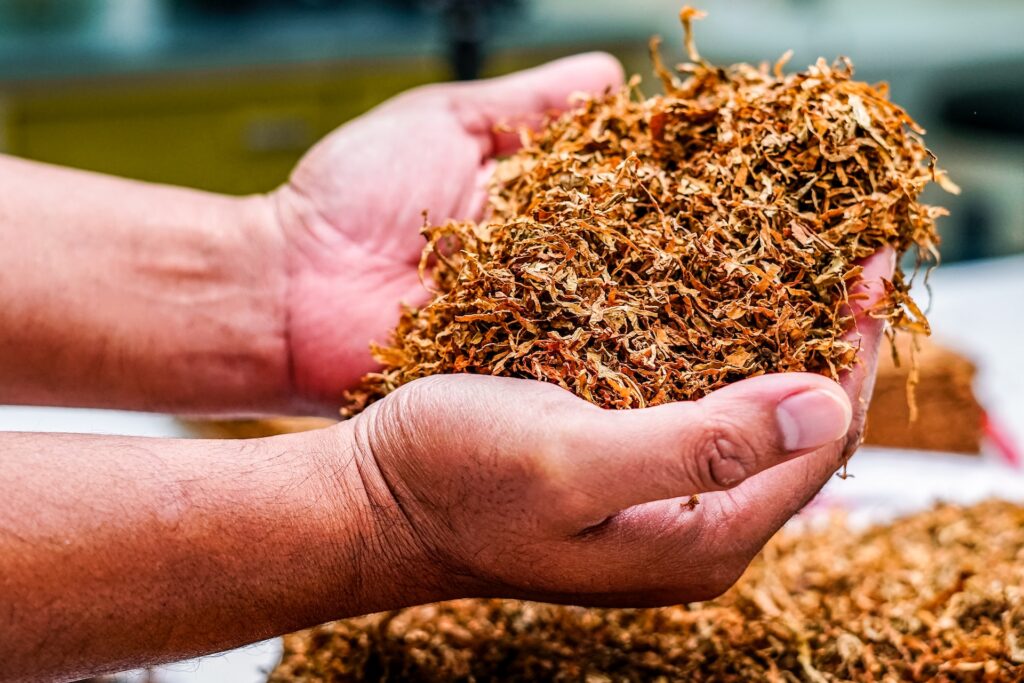
Cigars are typically made by bunching together long-filler tobacco leaves, which are the interior leaves of the tobacco plant, and then rolling them in a binder and wrapper leaf. They are usually ready to smoke as they are and require no further preparation, although some choose to further age their cigars in a humidor.
Pipe tobacco is generally sold in loose form or as pre-formed plugs or flakes. Pipe smokers need to fill their pipe bowls with the desired amount of tobacco and then tamp it down lightly.
On the whole, cigar tobacco will be of better quality and more expensive. A great deal of effort goes into cultivating and processing tobacco for cigars, as the outer leaves need to be perfect to be used as a wrapper. Premium cigars will be made using the finest tobacco. On the other hand, unless it is for a limited-edition or premium tobacco range, pipe tobacco tends to be a little cheaper.
Cigars are also often made using a blend of tobacco from different harvests and even different countries. Whether this be a mix of filler tobaccos, or a filler tobacco from one country and a wrapper from another, the mixture of tobacco types in a cigar makes for a complex and flavourful smoke. Pipe tobacco will have two key variations; regular and aromatic. Aromatic tobaccos will have a flavour added to them during the curing process, providing an extra scent, such as vanilla or cherry. Regular pipe tobacco will only feature the natural tobacco taste.
The size of the tobacco also differs, as pipe tobacco is usually cut fairly finely to be packed into the pipe. Cigars will instead often use whole leaves, concertinaed in the filler, as well as the whole exterior wrapper leaf.
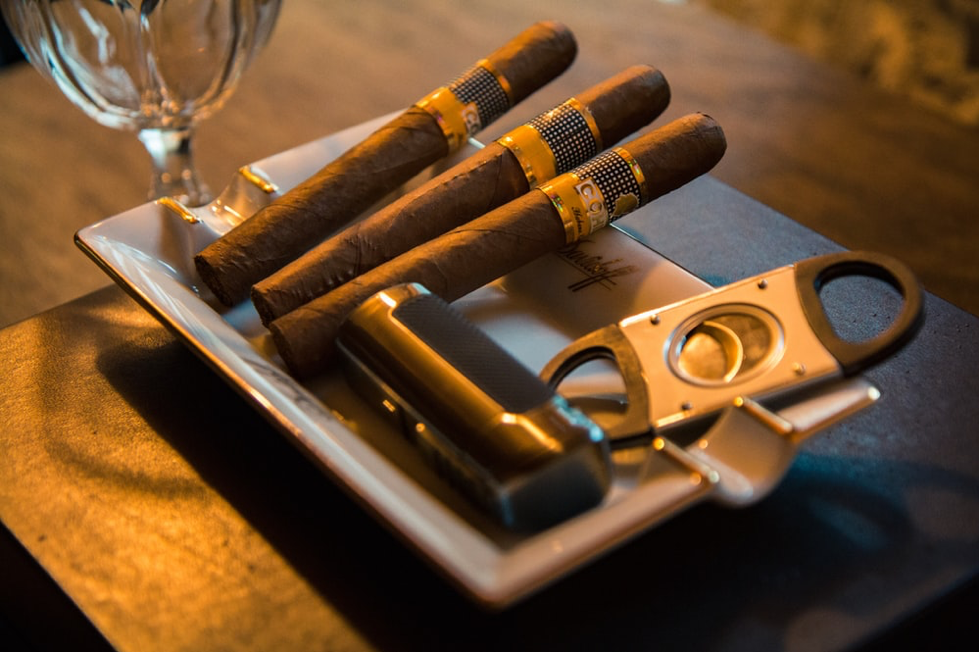
One slight difference between cigars and pipes is the equipment needed to smoke them. For a cigar, the absolute essentials will be a cigar cutter, lighter and an ashtray.
For pipe smoking, you will obviously need to buy a pipe! You’ll be able to find a decent pipe for around £40; however, a lot of quality pipes will cost a lot more, with prices running into the thousands! To smoke a pipe, you will also need matches or a lighter, a pipe cleaner and possibly a pipe rest.
Cigars are usually smoked by drawing the smoke into the mouth, allowing it to linger, and then exhaling. The smoking experience is characterised by slow, deliberate puffs that allow the flavours and aromas of the tobacco to develop.
Pipe smoking involves a slower and more deliberate process compared to cigars. Pipe smokers often use a technique called “sipping” or “sipping and puffing,” where they draw small amounts of smoke into the mouth and then puff to keep the tobacco lit. This method helps maintain a cooler smoke and enhances the flavour nuances.
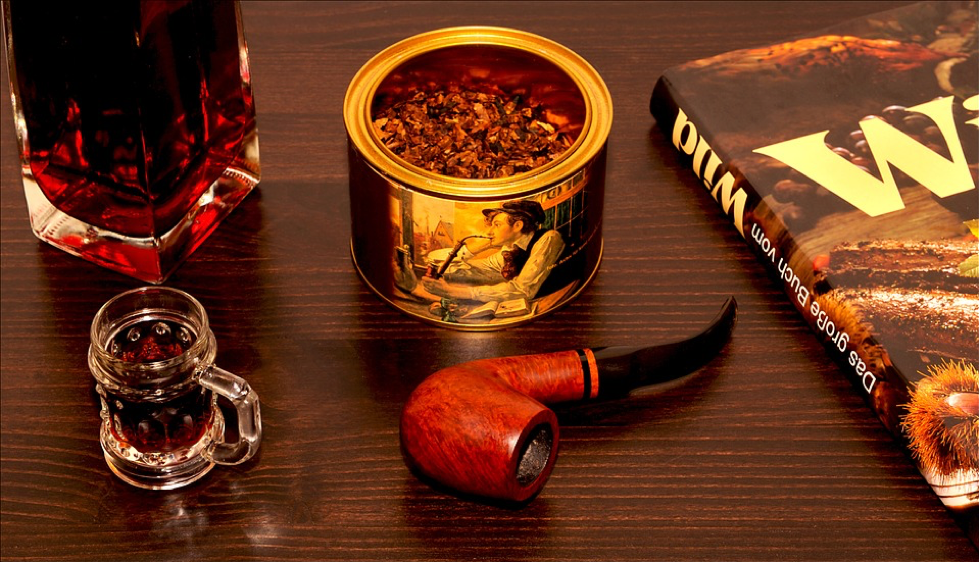
Cigars come in a wide variety of shapes, sizes, and flavours. The tobacco blends used in cigars can range from mild to full-bodied, and they often have distinct flavour profiles influenced by factors like the origin of the tobacco and the ageing process.
Pipe tobacco also comes in a wide range of flavours and blends. Different types of tobacco, such as Virginia, Burley, or Latakia, are combined to create various taste experiences. Pipes are known for providing a fuller range of flavours due to the way the tobacco is burned and the way the smoke is channelled through the pipe.
Cigars are often designed to develop in flavour as they are smoked. The initial notes can be quite different from the finish, and tastes and aromas will change in complexity and depth throughout the smoking experience. Conversely, pipes will typically provide a more uniform smoking experience, as the tobacco used is not rolled and will usually come from the same batch.
If you are looking to take up cigar or pipe smoking, then both hobbies require a little maintenance. For cigars, if you are looking to purchase a box of cigars, collect cigars, or just have a few too many to smoke at once, then you will need to invest in a humidor. A humidor is needed to keep your cigars at the ideal humidity and temperature. Without it, the cigars can become brittle and dry or soggy and wet – both outcomes leaving the cigar unsmokeable.
For pipes, you will need to find the perfect balance between building cake in your pipe and keeping it clean. ‘Cake’ is a layer of carbon that forms in the pipe and helps to protect your pipe, allowing it to last a lot longer. When cleaning out your pipe, you must avoid scraping, as this can remove the ‘cake’. Getting this right can take a little practice.
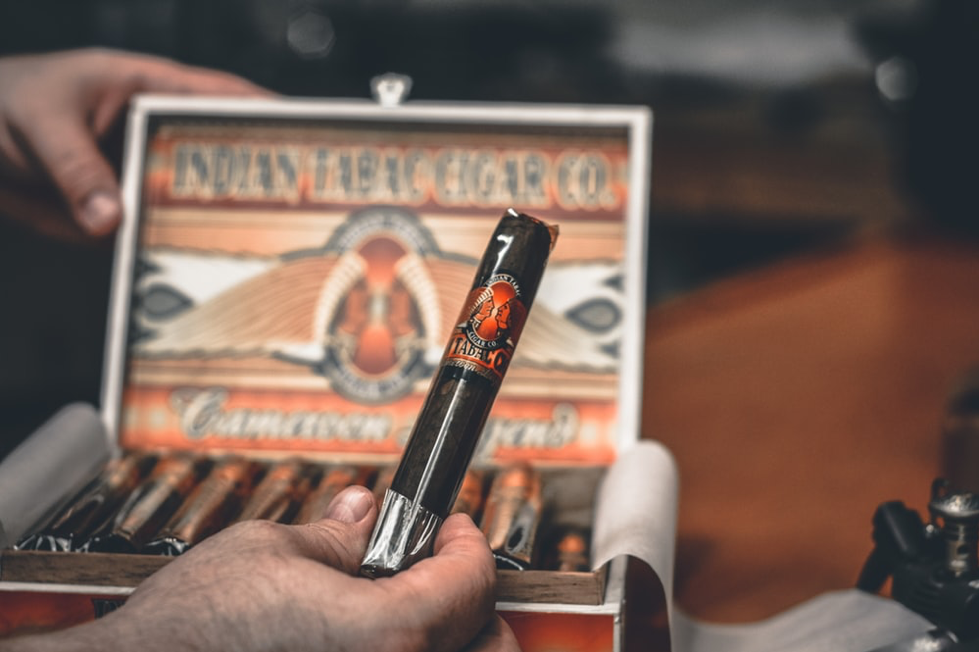
Many assume that cigars will be the most expensive of the two smoking hobbies. Ultimately, it is down to your personal preferences and choices when it comes to brands and luxury vs budget.
It is hard to directly compare the costs of pipes vs cigars. Pipe smoking is often more of an investment to start with, with pipes costing upwards of £30-40 (many premium pipes will be in the hundreds); however, pipe tobacco can be found relatively inexpensively and can be portioned out as desired.
For cigars, there are fewer upfront costs, although cigars can be a little pricier per smoke than a pipe if you choose premium brands. However, when you consider that one cigar can contain the same amount of tobacco as a whole pack of cigarettes, around £15 per cigar doesn’t seem too bad! Cigars can, of course, start costing a lot more if you find yourself getting into limited-edition smokes, collecting or having a taste for top premium brands.
So which do you prefer to smoke: pipes or cigars?
Smoking a pipe can be an enjoyable and relaxing hobby. Pipe smoking has a rich history dating back centuries, with tobacco pipes being enjoyed by smokers around the world.
Whether you’re a complete beginner or a seasoned pipe enthusiast who wants to brush up on their skills, this guide will provide you with all the essential information about smoking tobacco pipes.
Pipes come in all shapes, sizes and materials. Whether it be the Billiard, Apple or Calabash, it allows for a comfortable hang from the mouth; whilst the contemporary classic, the Poker, has acquired a cult following due to its intriguing, rigid shaping.
Tobacco pipes have been made from such materials as corn cobs, clay and Meerschaum over the years, but the most common material would be the root from the Briar wood, an evergreen shrub found in the Mediterranean. The root is chosen because of its natural heat-resisting and moisture absorption properties and after curing, its inability to taint the flavour of the pipe tobacco.
Briar pipes are recommended for beginners due to their durability and heat-resistant qualities.
Take a look at our guide to tobacco pipes to uncover the style of pipe that appeals to you most.
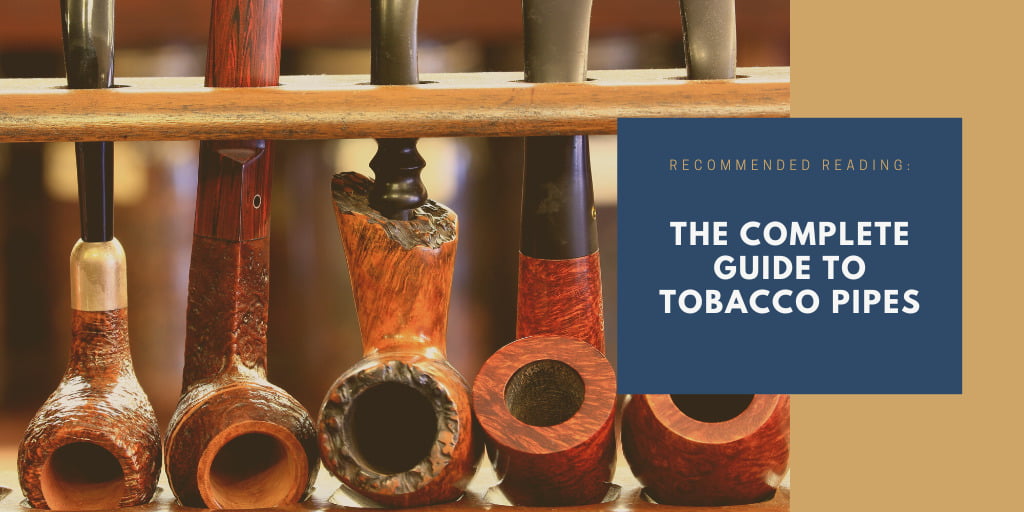
There are countless pipe tobacco blends to choose from, each offering a different flavour and aroma. As a beginner, it’s best to start with a mild and straightforward blend.
Virginia tobacco is one of the most popular types for pipe smokers, and it is great for beginners, as it is so mild. It also contains the highest level of natural sugars of all blending tobacco types, which gives it a slightly sweet taste, which can be appreciated by novice smokers.
Try:
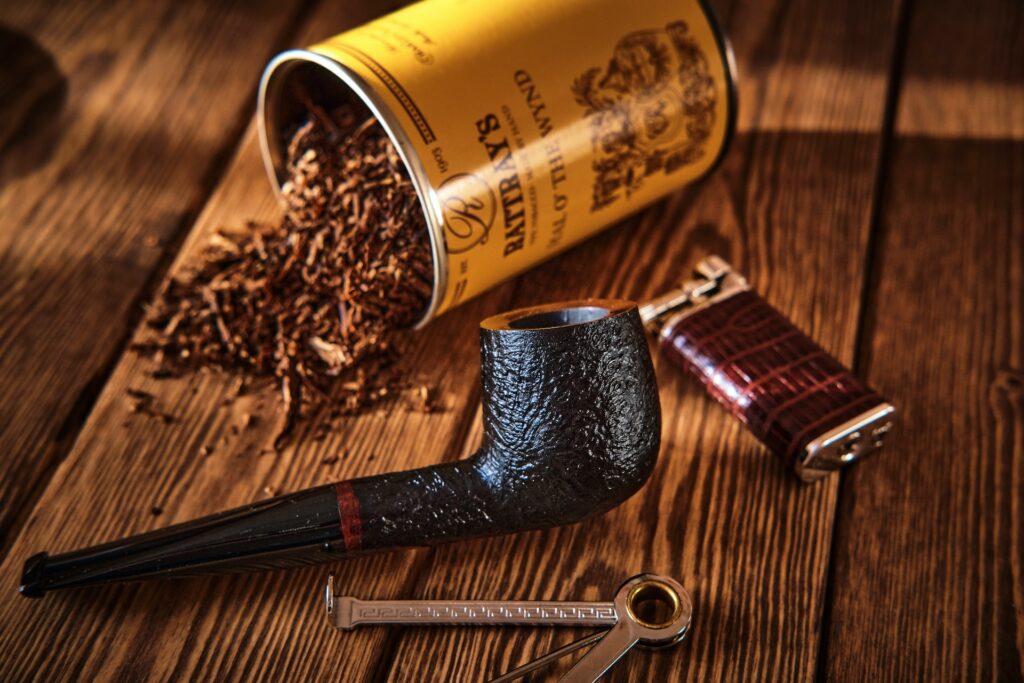
To smoke a tobacco pipe, you will need a few essential items. Here’s a list of the basic kit for smoking a tobacco pipe:
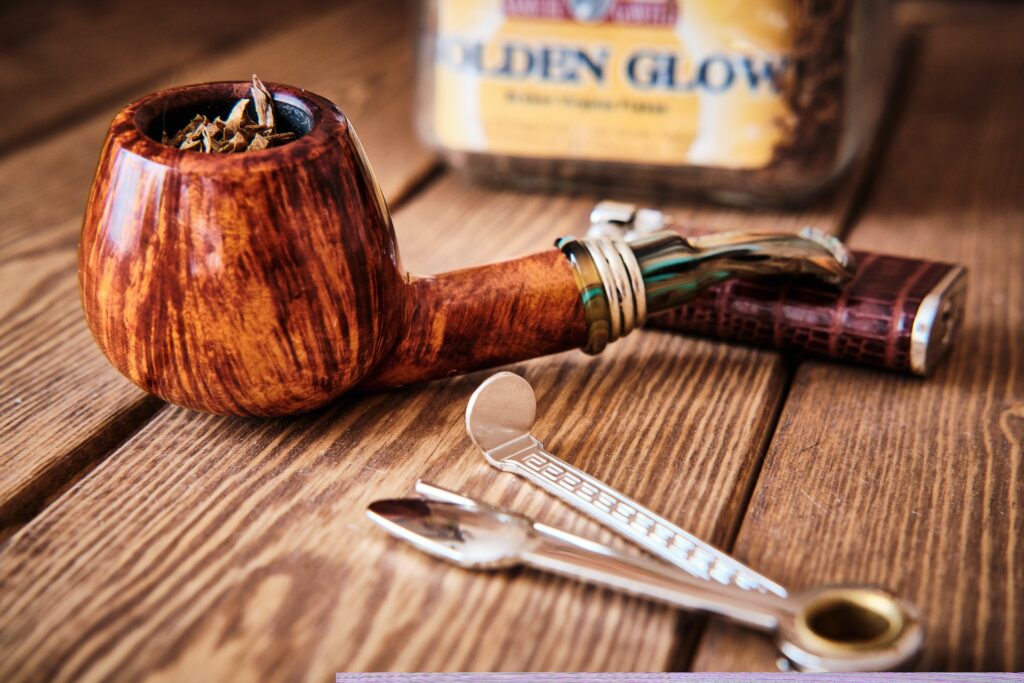
Packing a tobacco pipe involves a specific technique to ensure an even burn and enjoyable smoking experience.
Ensure that your pipe is clean and free from any remnants of previous smokes. Use a pipe cleaner to clear any debris or moisture from the stem and shank.
There are various packing methods, but the most common one is the three-layer method. It involves the following steps:
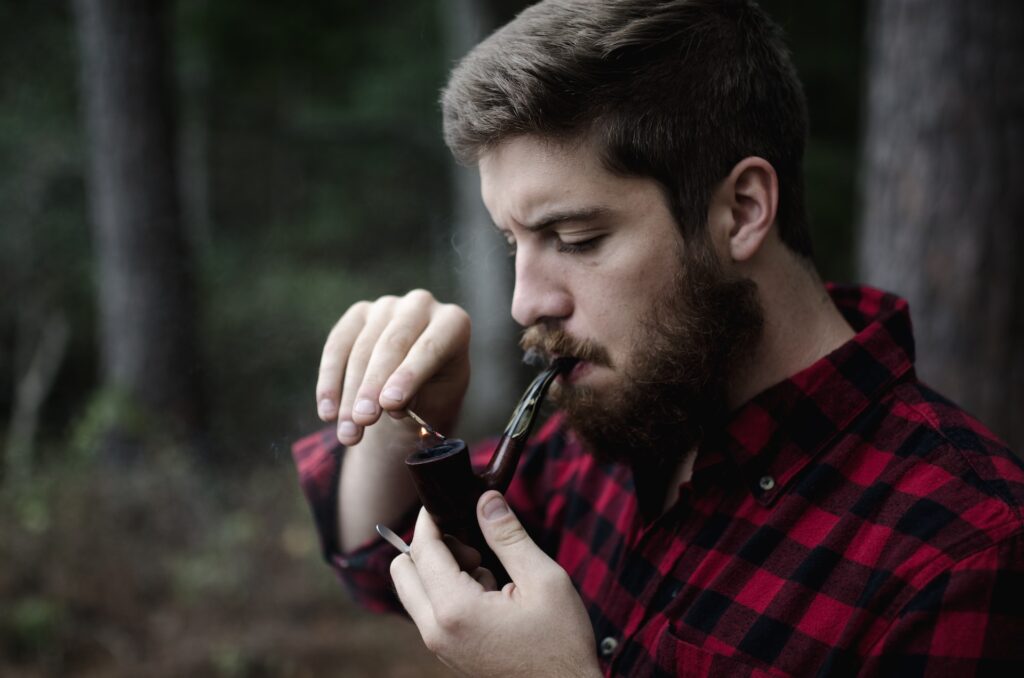
Lighting your tobacco pipe usually comes in a couple of stages:
Using your pipe lighter, hold the flame above the tobacco and move it in a circular motion. Take a couple of draws while lighting the pipe. The tobacco will become charred, not fully lit, and the first light almost always goes out – this stage is known as the charring light.
The charring light will go out, usually within less than a minute. Use a tamper to pack the tobacco down again, as this helps embers to form in the chamber of the bowl.
Once the first light is out, you will need to light the pipe again. Take a couple of draws after the pipe has been lit to ensure it lights evenly. Try not to overdraw, as this can negatively affect the taste of the tobacco.
If your pipe was packed properly, it should remain lit throughout the duration of your smoke. You can occasionally pack the tobacco to keep the embers going.
Sometimes, no matter how perfectly you’ve packed the bowl, the tobacco just struggles to stay lit. If you’re having that problem, you need to cover the bowl with your fingers, but leave a little hole for air to pass through. Take a few, quick, sharp puffs and then uncover the bowl – this is referred to as stoking the pipe.
To keep the pipe lit, you’ll need to puff routinely. Puffing too much can make the pipe get too hot, which can cause tongue bite. If the bowl of your pipe feels too hot to touch, you need to slow down the speed at which you are puffing.
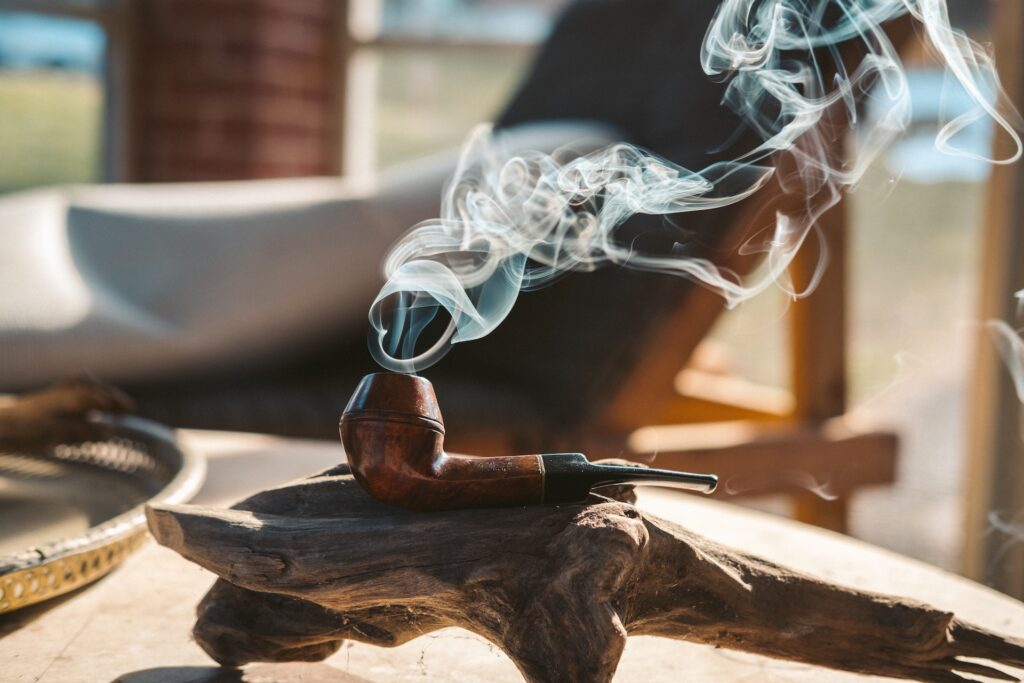
Tobacco pipes, like any other smoking devices, can encounter a few common problems. Here are some potential issues you may face with tobacco pipes and suggestions for how to address them:
Over time, tobacco residue can accumulate in the bowl, leading to clogging. To fix this, try using a pipe tool or a pipe cleaner to gently scrape away the debris and clear the airway. Be cautious not to damage the pipe bowl in the process.
Moisture can collect inside the stem and bowl, resulting in gurgling sounds and decreased smoking quality. To resolve this, consider using a pipe cleaner to remove any excess moisture and allow the pipe to dry thoroughly before using it again. Additionally, you may want to use a moisture trap or filter to absorb excess moisture during smoking.
Pipes made of low-quality materials or those exposed to excessive heat can develop burnout or cracks in the bowl. Unfortunately, this issue is challenging to fix, and the best solution is to replace the pipe. To prevent burnout or cracks, ensure you don’t overheat the pipe while smoking and choose pipes made of durable materials such as briar wood or meerschaum.
Tongue bite refers to a burning sensation on the tongue caused by excessive heat or improper smoking technique. To alleviate this issue, slow down your smoking pace, ensure the tobacco is properly packed in the bowl, and use a filter or a cooling mouthpiece if necessary. Additionally, choosing milder tobacco blends or adjusting your packing technique can help reduce tongue bite.
Ghosting occurs when the taste of a previously smoked tobacco blend lingers in the pipe and affects subsequent smoking sessions. To address this, you can clean your pipe thoroughly using a pipe cleaner, alcohol-soaked cotton swabs, or pipe cleaning solutions. Regular cleaning and rotation between different tobacco blends can help prevent ghosting.
Remember, proper pipe maintenance and care are essential for enjoying a tobacco pipe to its fullest potential. Regular cleaning, avoiding excessive heat, and using quality tobacco and accessories can help minimise many of the common problems associated with pipe smoking.
Smoking a tobacco pipe is a very enjoyable experience, and many pipe smokers love collecting a variety of pipes, from the simple to the more intricately designed! To help you get started on your pipe-smoking journey, take a look at our handy guide to different tobacco pipe types!
Pipes come in a variety of shapes, sizes and materials that each play a part in the smoking experience.
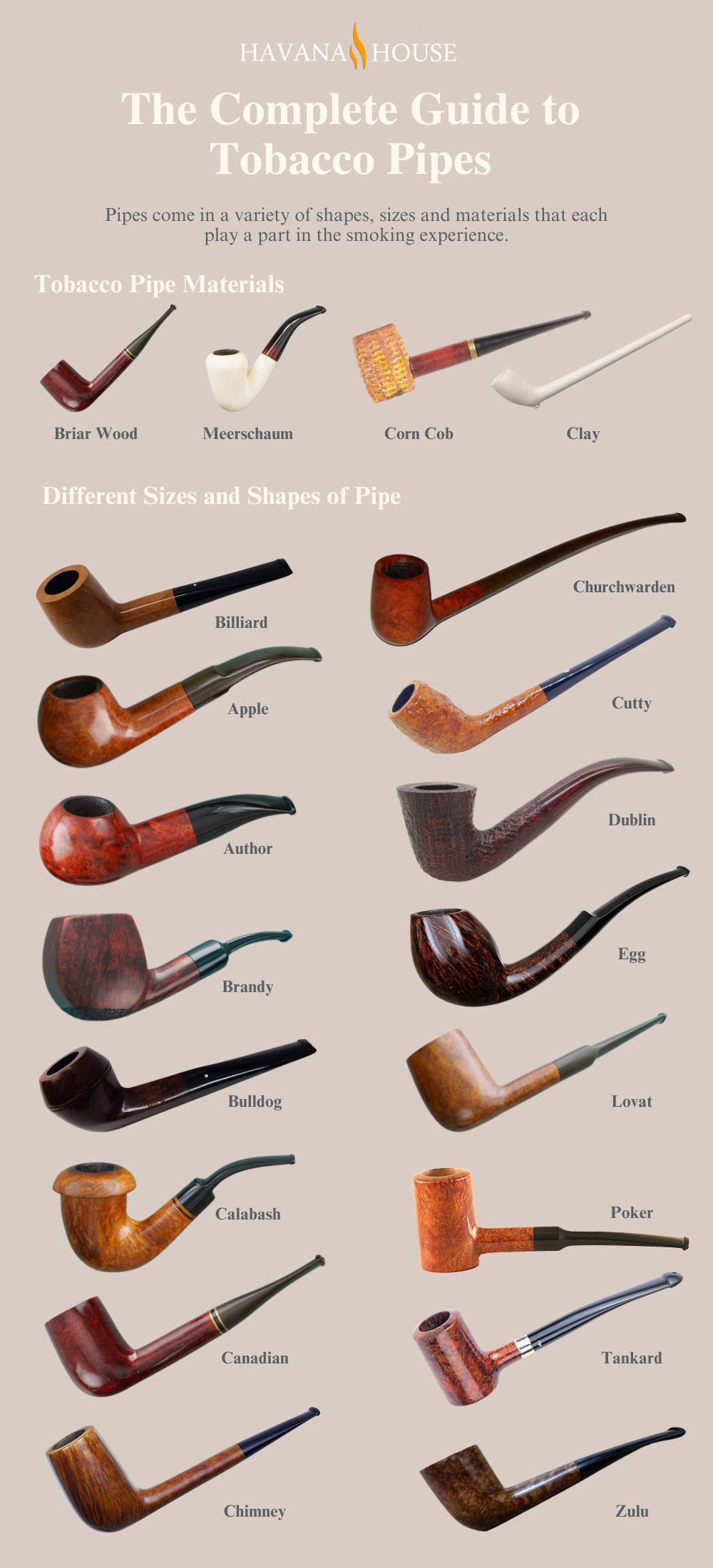
There are a few main materials used to construct tobacco pipes; Briarwood is the most common, and meerschaum, corn cobs, and clay have also been used in the construction of smoking pipes.
The most commonly used material for making tobacco pipes is Briarwood. It is ideal for use in pipes due to its durability, heat resistance and the fact that it is breathable.
The porous nature of the briar wood also makes it perfect for absorbing the oils and heat that are produced when burning pipe tobacco. Briar is a type of wood found at the roots of Erica Arborea trees, which are predominantly found near the Mediterranean Sea.
Meerschaum is one of the most expensive materials used to make pipes, and it is found near the Black Sea in Turkey. With an easily carvable quality, pipes made from this material will often incorporate intricate designs, which can, in turn, bump up the price point.
Regardless of the price, these pipes are highly sought after for the excellent smoke they produce, and for their look and feel. Pipes made from Meerschaum will be lightweight, and the smoke will be cool and smooth.
By far the cheapest and most accessible material, corn cobs, also known simply as ‘cobs’, are made from dried and hollowed-out corn cobs. A stem is then attached to the cob to allow smoke to pass from the bowl (the cob) to the smoker’s mouth!
Clay pipes have been used for smoking tobacco since the 16th century. Clay can provide a ‘pure’ smoke as it is not tainted by additional flavours from the pipe bowl. Compared to other types of pipe, clay can burn hot, making them a little trickier to handle, so they are less commonly enjoyed now. You can learn more about the history of clay pipes on our blog.
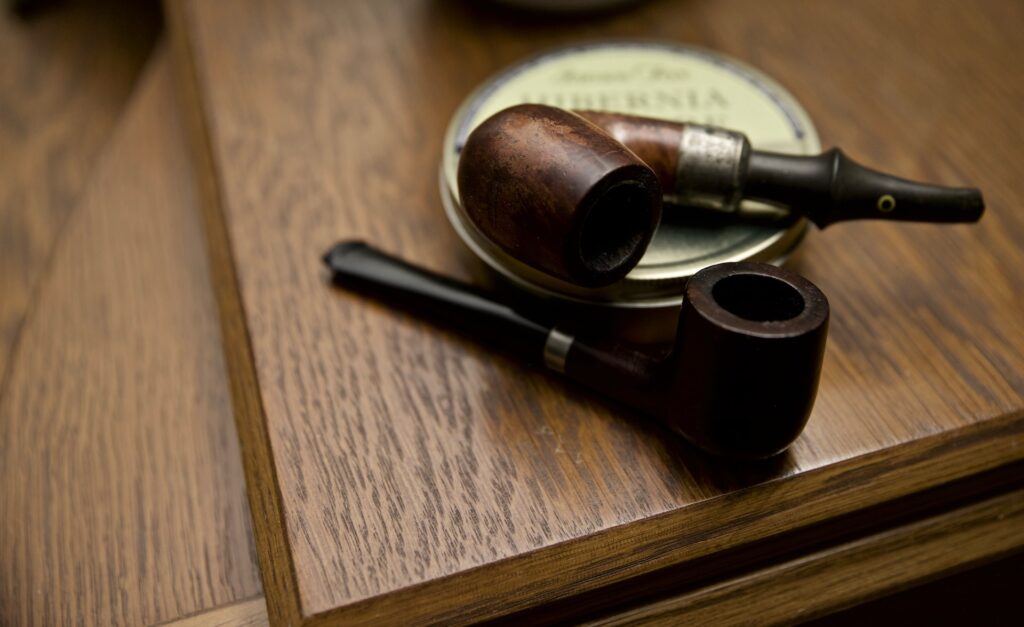
There are a number of different size and shape options for your pipe. The two biggest concerns are whether you want a big or small bowl and if you want the stem to be long or short.
All factors considered, there are a great many different types of pipe available, and no specific one is “correct”; just pick a pipe material and shape that feels right to you – or just the one you think looks the best!

The most common shape for pipes, acting as a sort of benchmark for many other shapes of pipe, the billiard is consistently a popular choice for pipe smokers. Featuring a straight bowl with a cylindrical chamber, the billiard is set at a 90-degree angle and can come with either a straight or bent stem.

A common type of pipe that features a slightly rounded ‘apple’-like bowl and is usually accompanied by a stem with a tapered mouthpiece. The apple-shaped bowl is far thicker than other pipe types, allowing it to absorb the oils and heat produced by the tobacco effectively. To counteract the heavier bowl of the apple, a bent stem is usually attached to this pipe.

Author pipes are one of the largest pipe types, featuring a big bowl and extra thick shank and chamber. With a similar bowl shape to the apple pipe, the author features a slightly shorter shank with a thick, quarter-bent stem. The large chamber allows for a great deal of tobacco to fit in the pipe, presenting you with the opportunity to have a lengthy smoke.

Designed to look like a brandy glass, this uniquely shaped pipe features a large bulge that makes it easy to hold. The classic brandy pipe will have a quarter-bent stem; however, it is not uncommon to find them with straighter or more bent stems. Usually, this pipe will be made from Briarwood and will sport a smooth finish.

A big pipe for serious smokers, the bulldog is a powerful pipe, with a bulky bowl and shank. The short and bulky design of the pipe, combined with its thicker wood walls, makes this the perfect pipe for smoking Balkan blends or flake tobacco.

Often made from briar, the bowl of the Calabash is tapered and flares wide at the opening, making quite a deep chamber for the tobacco. The shank leads to a bent stem, usually at least a three-quarters bend. The Calabash is best known as the pipe of choice for Sherlock Holmes, who was depicted smoking a Calabash pipe.

A Canadian is similar to a Billiard but features a much longer shank, the section between the bowl and the stem. A Canadian pipe will feature a shank that is at least 1.5 times the height of the bowl, but no larger than double the height. Attached to this will be a tapered stem. A longer shank means that there is more room for the heat and oil of the smoke to be absorbed, making for a cooler smoke.

Chimney is a great name for a pipe due to its smokey nature. This type of pipe features a taller bowl, much like a chimney in shape, allowing for more tobacco to be packed into the pipe. The tall bowl size means that a fairly sizeable chunk of wood is needed to form this type of pipe, which often pushes up the price tag, making this design a little rarer than others.

More stem than it is pipe, the Churchwarden must have at least 9 inches of stem to be considered such a pipe. The stem can technically be as long as possible if it can still be held and smoked, but most will be between 9 and 18 inches long! There is no set size or shape for the bowl of this pipe, but usually, a smaller bowl will be used as it makes it far easier to hold and smoke.
Originally, these pipes would have been made from clay; however, nowadays, briar is the more common material, although there are also a fair number of Meerschaum Churchwardens. This pipe has become popular again in recent years thanks to Gandalf smoking one in Lord of the Rings!

The oldest pipe shape that is still produced now, the Cutty is reminiscent of the long old clay pipes from the 16th-century, when pipe smoking first took off in the UK. This shape was chosen in the early days of pipe smoking as it was a fairly easy shape to create in a mould for the clay. The bowl points further down than many modern pipes, as it was designed to keep the smoke and heat away from the face of the smoker.

One of the oldest pipe shapes, the Dublin dates back to when pipes were made from clay. With a conical-shaped bowl, the pipe is easy to hold and can pack in a good amount of tobacco. The bowl shape is the only fixed requirement for a Dublin pipe, giving pipe makers a lot of room for creativity and variety.

A long and tall pipe, the egg has a slightly egg-shaped bowl, with tall, oval sides and a thin chamber. For a bowl of this shape, it has quite a small circumference, which means it needs to be handled gently. More often than not, the egg pipe will come with a bent stem.

Similar to the Canadian, the Lovat features a shank of around 1.5 times longer than the height of the bowl, but no more. Again, this extended shank allows for a cooler smoke. The Lovat is finished with a saddle bit stem.

The Poker pipe is a Sitter pipe, meaning that it can sit on its own without falling over due to the flat bottom of the bowl. The name of this pipe originates from when Poker players would place the pipe atop their deck of cards to stop others from seeing their hand or to stop the cards from blowing away!
A very smoker-friendly pipe, the Poker was particularly enjoyed by the working class, who would need to put the pipe down occasionally when working with their hands.

The Tankard pipe is similar to the Poker, in that it is a Sitter pipe, with the foot of the pipe cut flat. The Tankard, so named as it looks like a tankard, has a tall bowl and a long and thin stem. The shank is a lot smaller than many pipes, especially in comparison to its bowl, at around half the height of the bowl. This makes the tankard pipe very lightweight.

Another commonly used pipe shape, the Zulu is fairly similar to the Dublin; however, it is often made with thinner walls, making it a lighter pipe. The Zulu differs from many other bent pipes, as it features a straight shank that comes out of the pipe at 90 degrees, yet features a bent stem. The gentle bend and lightweight feel make this one of the easiest pipes to smoke with.
What is your favourite pipe shape? Let us know in the comments below! Looking to buy a pipe? Havana House stocks a wide range of different pipes, so take a look at the collection available!
Briar wood is one of the most popular choices of material to make tobacco pipes from. We explore why this type of wood is so good for pipes and if you should choose a briar wood pipe for your tobacco smoking endeavours.
Briar wood comes from the root of the Erica Arborea, or tree heather, a type of flowering shrub that is native to the Mediterranean.
The part of the tree heather that is used for briar wood pipes is known as burlwood and can be found amongst the roots. These roots are dug out by hand, and the wood is cut into smaller blocks to be used to create pipes.
In the past, this process would have killed the plant, but now, briar wood can be harvested without destroying it.
One Erica Arborea plant can only produce around 4.5kg of burl, which can create between six and twelve pipes.
Briar wood is the most commonly used material for tobacco pipes, implying that it has many benefits that make it ideal for use as a smoking pipe. This is the case, as briar wood is a very durable wood, with great heat resistance, making it fantastic for a smoking pipe. In fact, briar wood is capable of withstanding heat of up to 371 degrees Celsius.
Briar wood is naturally porous, which allows it to absorb the oils and moisture that are produced when tobacco is burned in it. This helps to keep the smoke cool and dry, making for a more pleasant smoking experience.
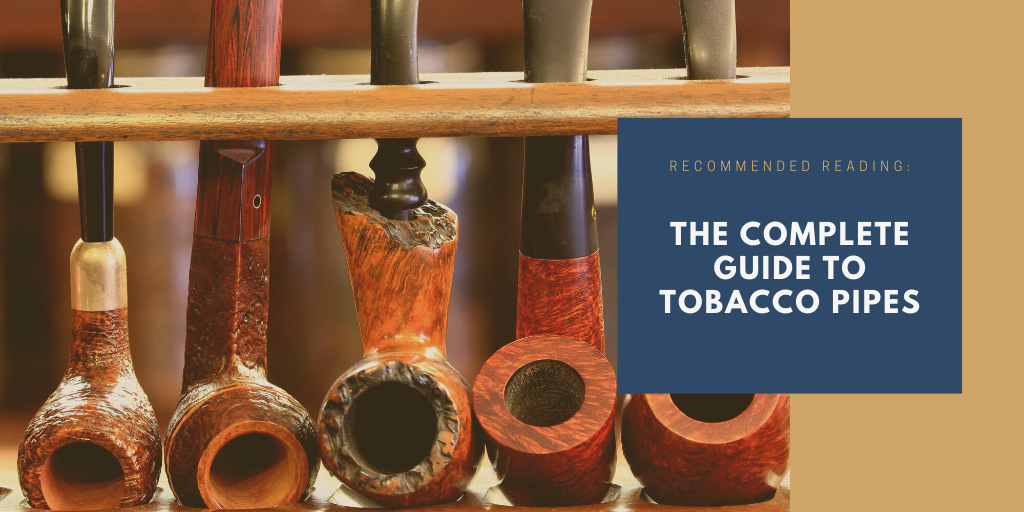
Blocks of briar wood are submerged in boiling water, which removes any resin and sap that are found within the wood. The blocks of wood are then put into a large kiln, where they dry. The wood is left to age in the kiln for at least a year.
Once the wood is dried and aged, the wood is carved into the desired pipe shape, with a stem added to smoke through.
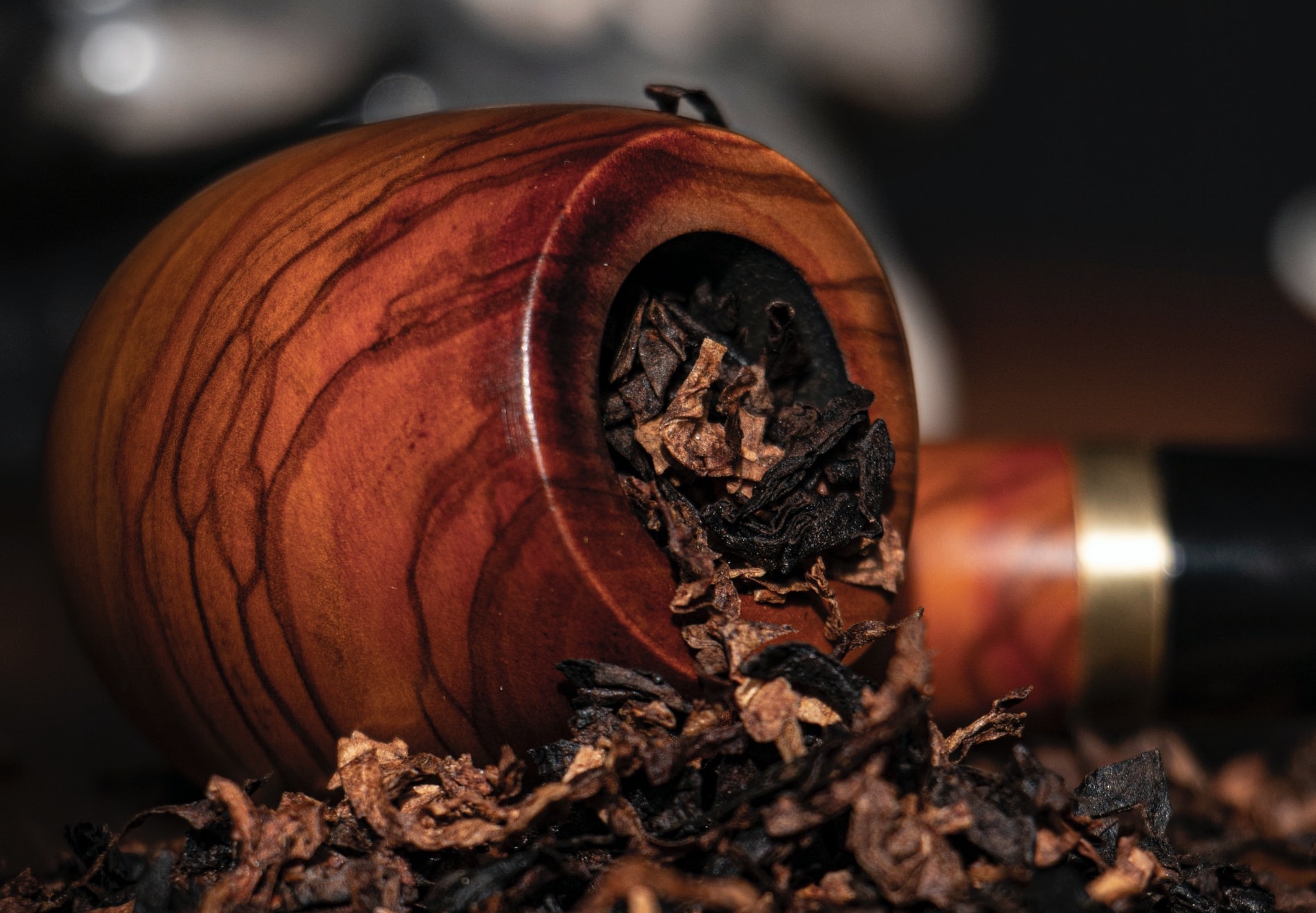
While briar wood is one of the best and most popular materials for tobacco pipes, it does have a few factors to be wary of if you’re looking for a top-quality smoking pipe.
Briar wood often has tiny air pockets, which can be filled with dirt and small stones while it grows underground. These holes won’t be noticed until carving has begun, so some cheaper briar wood pipes, and those made by machines will have fills in them.
As such, a briar wood pipe with no fills visible tends to be an indicator of high-quality briar wood. Other signs of good quality briar wood include having a tight uniform grain, and a wood pattern that contains both straight and swirly grains.
If a briar wood pipe isn’t for you, then what other types of pipe can you look for? When tobacco was first introduced to the UK, clay pipes were created and became one of the earliest types to be used. Since then, tobacco pipes have been refined to get the best flavour and smoking experience.
Meerschaum is a star material for pipe making. It’s a more expensive material, but it is easier to carve into intricate designs than briar wood. They are lightweight, and produce cool, smooth smoke.
A cheaper material for pipes, and one that is more popular in the United States, is the corn cob. Corn cob pipes, also known as cobs, are simply made from dried and hollowed out corn cobs with a stem attached.
If you want to enjoy all the wonders that tobacco tasting has to offer, but cigars aren’t quite your style, then you’re in luck. There are plenty of other ways to enjoy tobacco, but none are as distinguished and sophisticated as pipe smoking.
However, if you don’t know how to smoke a pipe or do so incorrectly, then you will easily lose the classy effect that it can create. That’s why we’ve made this guide on how to properly smoke a pipe.

Pipe smoking, like cigar smoking, is a method of tasting tobacco. However, instead of the tobacco being neatly rolled up and ready to smoke in that form, it is instead smoked using a pipe.
These pipes are typically carved out of wood, and you may recognise them being used by figures in films and television like Robert Downey Jr.’s Sherlock Holmes.
Pipe smoking requires a few more tools than smoking a cigar. Rather than overwhelm you with all the specifics, we’re going to cover the basic equipment that you’ll need in order to get yourself started with pipe smoking.
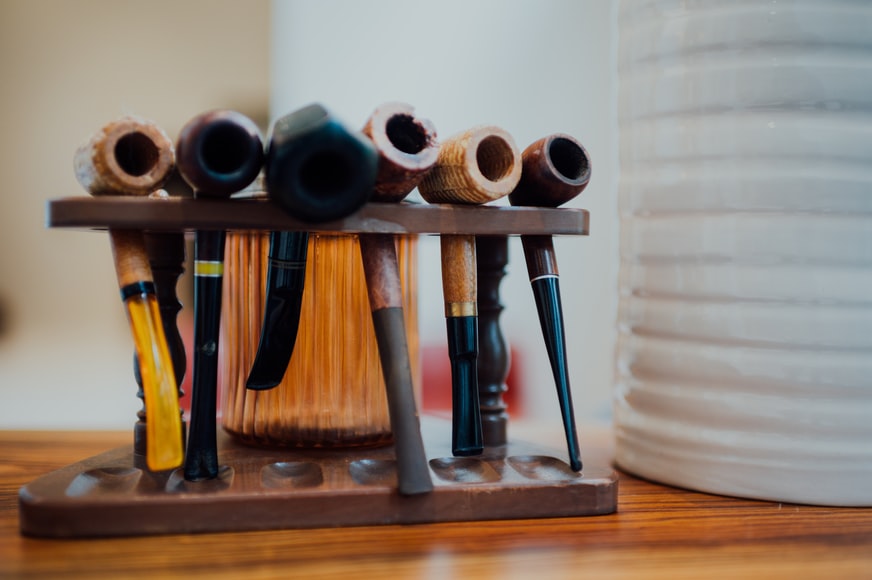
Tobacco pipes come in all shapes and sizes, from your country bumpkin style corn pipe all the way to the more classically recognised curved shape like this Savinelli Siena Smooth Shape 616.
What pipe you choose has more to do with aesthetic taste than it does the smoking experience, so the world really is your oyster for which pipe you use.
Where there’s smoke…
Another key piece of equipment you’re going to need in order to smoke your pipe is a way to light it. While you technically can use a standard cigarette light, it’s not an easy feat to get the flame into the bowl and might ruin the image of pipe smoking.
That’s why we recommend using either a proper pipe lighter like this Dissim Inverted Soft Flame Pipe Lighter or wooden matches.
This piece of kit is beautifully simple and is used to properly pack your tobacco into the pipe bowl to keep it looking crisp and classy.

Pipes that get a lot of use are inevitably going to get clogged. That’s why it’s essential that you keep some pipe cleaners on hand.
Now for the main event! The tobacco.
Pipe Tobacco comes in a variety of styles, cuts and brands – all of which can impact your pipe smoking experience. Some of the different cuts include:
Which cut you go for will affect how fast and how hot the tobacco will burn, so do your research ahead of hand. You can browse our full range of pipe tobaccos available in our store below.

Now that you have your equipment, it’s time to get down to business. Here, we’re going to walk you through how you go about smoking a pipe.
Grab a loose pinch of your chosen tobacco and put it in the bowl of your pipe. Gently pack it down with your tamper.
Add a second pinch and tamp it down. Your bowl should be half full.
Add a third pinch of tobacco and tamp it down. If your bowl is two-thirds of the way full now, add another pinch of tobacco and tamp it down, leaving a little space at the top of the bowl.
Before you light your tobacco, you need to make sure that air flows freely through the pipe. Do this by taking a couple of test puffs on your pipe.
If the air isn’t flowing freely, you’ll need to empty your pipe and start over.
You need to be careful when lighting your pipe, as burning anything that isn’t tobacco can alter the taste of the smoke. If you’re using matches, let it burn for a second after lighting so the sulfur can burn off.
Apply the flame from your match or lighter to the bowl in a circular motion while drawing gently on the pipe.
Pipes will typically light once with what’s known as a “false light”. In order to get “true light”, you’ll need to let the false one go out and then light the tobacco once more.
As with cigars, pipe smoking is about tasting the tobacco, not inhaling the smoke. Since pipe tobacco can be rather strong, inhaling the smoke can be overwhelming and easily put you off the entire experience.
Take little puffs into your mouth and try to savour the flavours in the tobacco before blowing the smoke out.
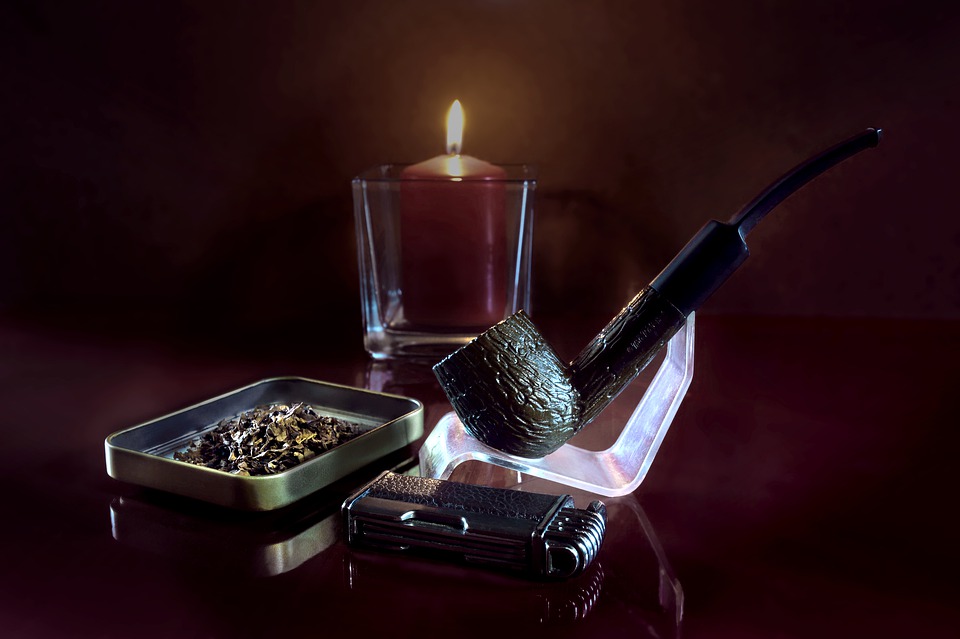
If you are a complete novice in pipe smoking, then here’s some advice for your first time.
Smoking a pipe too fast can cause what’s commonly called “tongue bite”, which is an irritating burning sensation across your tongue. This can easily ruin your entire experience and alter the taste of the tobacco.
Try to puff at a leisurely pace to properly enjoy the experience.
Smoking a pipe can take, on average, between 20 – 40 minutes. During this time, it’s likely that your pipe is going to go out, but this isn’t something to worry about. Simply relight your pipe where required using the previously mentioned circular technique and then carry on.
Hygiene is essential when using tools for smoking. Most pipes should be disassembled and deep cleaned once a month and also have an alcohol clean every few smokes for general maintenance. This will stop any of the tobacco flavours from being tainted by burned tobacco or moisture build-up.
To make these cleans easier on yourself, be sure to tap or scrape out the bowl of your pipe as soon as you’ve finished smoking.
That’s everything you need to know to get yourself started as a pipe smoker. If you’re new to pipe smoking and want to see what kinds of tobacco and pipes are available, head over to our store, where we have a great range from several top brands.

Pipe smoking has been around for centuries and remains a classic way to enjoy smoking tobacco. Much like with cigars, pipe smoking is an experience that focuses on tasting complex blends of tobacco, but with the use of a pipe.
Whether you’re a first-timer or a seasoned smoker, when you purchase pipe tobacco you’ll likely end up with more than you could smoke in one sitting. That’s why we’ve put together this helpful guide on how to store your pipe tobacco between smokes.
If you’re looking to buy pipe tobacco online, or you want to browse a wide range of pipe smoking accessories, check out our store today.
Storing pipe tobacco is the process of – you guessed it – storing your pipe tobacco in a specific way for a chosen period. The main objective when storing pipe tobacco is simply to keep your tobacco fresh enough that it remains pleasant to smoke.
Pipe tobacco needs to be stored in the proper conditions to stop it from drying out and becoming unpleasant to smoke. The optimum conditions to store pipe tobacco include:
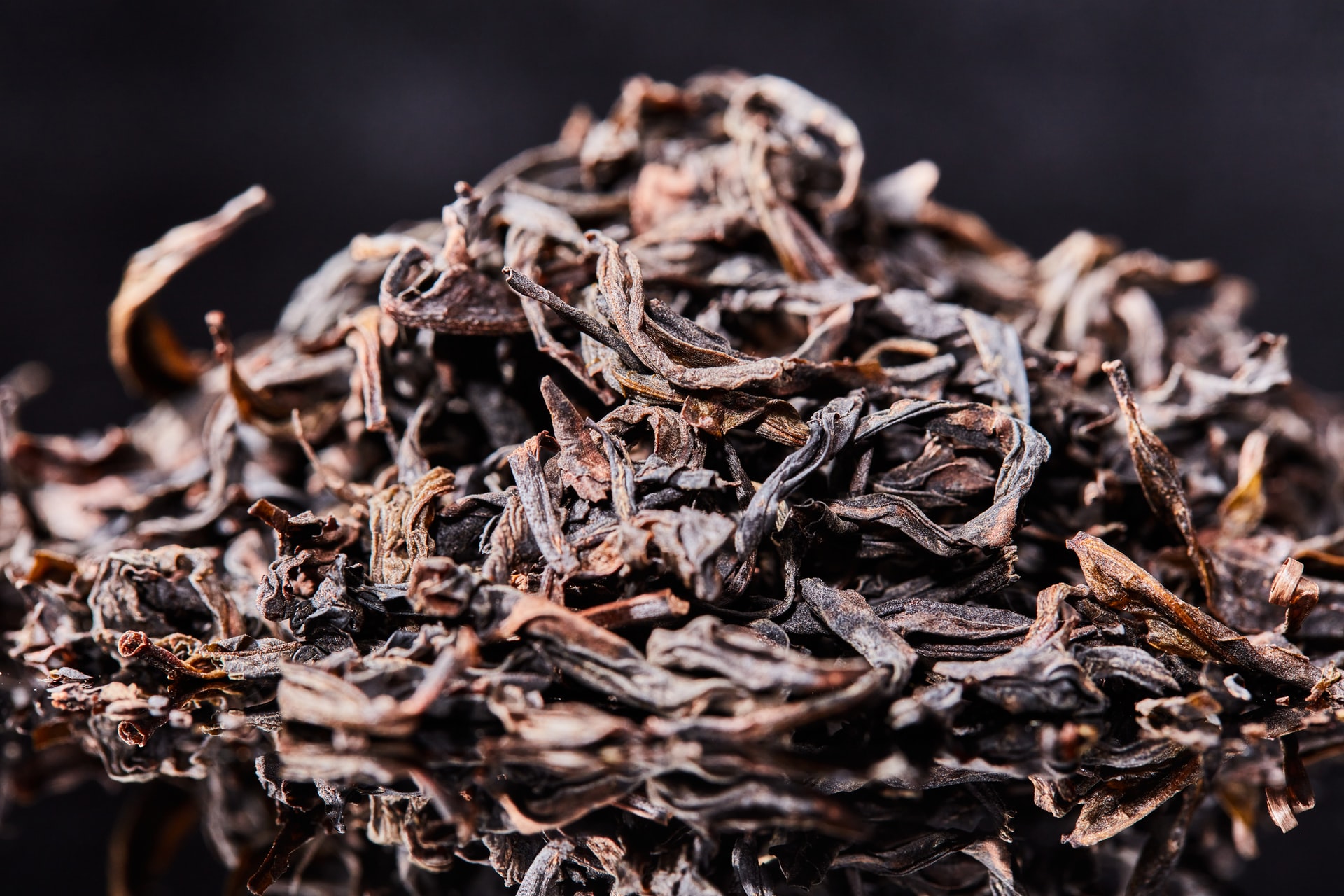
There are typically two types of packaging that your pipe tobacco will be stored in when you buy it. These are:
If your tobacco comes in tins then they’re relatively easy to store assuming they’re still sealed. The vacuum seal on the tin will work to keep the moisture in your tobacco for a while, however, once you’ve broken this seal your tobacco can dry out entirely within two to three weeks.
If you buy your tobacco in bulk, then it’s more likely you’ll receive your tobacco in a ziplock bag. Because these aren’t the most air-tight storage options, tobacco in a ziplock bag will dry out even faster than it would in a tin.
The two most important factors to take into account when choosing where to store your tobacco is temperature, humidity and exposure to sunlight. Here are some of our recommendations on where you can store your pipe tobacco.
Contrary to popular belief, pipe tobacco can actually be stored inside a humidor.
The purpose of a humidor is to store tobacco at the correct relative humidity. For cigars, this is between 65 to 72% RH. With the right tools and expertise, the relative humidity on your humidor can be calibrated to the level of your choice. For pipe tobacco, this level is anywhere between 55 to 75% RH depending on the brand, blend and period of storage.
It’s worth noting that while you can store your pipe tobacco in a humidor, under no circumstance should the two be stored together in the same one. As stated, both of them will require a different RH level and it’s better for all involved to keep them separate.
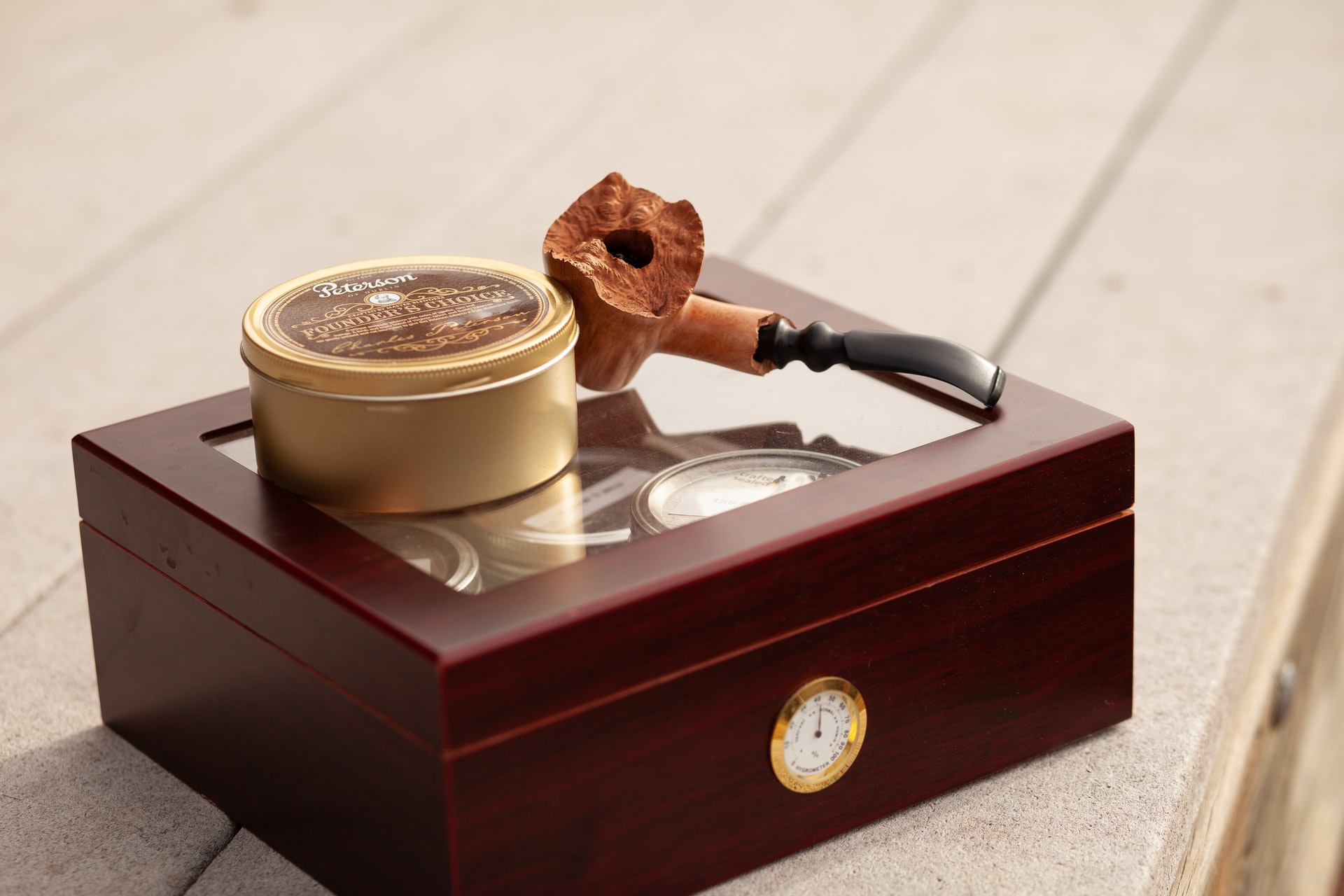
Using jars to store pipe tobacco is one of the most popular methods used by pipe smokers today. This traditional method involves using a ceramic or glass jar to store the loose tobacco inside to maintain moisture levels.
While this method isn’t great for those planning to keep their tobacco in the original tins, for those who buy their tobacco in bulk, jars make a nice organised solution. For the best results, make sure that your jar has an airtight seal.
The main drawback of storing your tobacco in jars, particularly glass or acrylic ones, is that the tobacco can still be exposed to sunlight. If you’re using jars to store your tobacco, make sure you keep them somewhere dark where they can’t be reached by damaging UV rays.
As with cigars, you can make your controlled environment for storing pipe tobacco with an ordinary Tupperware container.
While it’s generally frowned upon to store any kind of tobacco products in plastic due to staining and toxins from the plastic contaminating the tobacco, that doesn’t mean this frugal approach can’t be done.
If you’re storing loose tobacco, make sure you’re using a high-quality Tupperware made from 100% virgin plastic that is free of BPA phthalate or use a glass Tupperware container. If you’re planning to store your tobacco in jars or their tins, then using ordinary Tupperware is fine as the tobacco won’t be in contact with the actual plastic.
Thanks to their huge variety of sizes, Tupperware containers make great storage options for those looking for a cheap but effective way to keep their pipe tobacco in optimum smoking condition.
If you’re looking for an even more affordable option for storing your pipe tobacco then an ordinary cardboard box might be the answer.
Obviously, we don’t mean using cardboard boxes for storing loose tobacco. Instead, you can store your tins, jars or Tupperwares of loose tobacco inside a cardboard box to keep them all together or to keep different blends together.
The idea behind this method is that any external or excess moisture will be absorbed by the cardboard before it can cause tins to rust. The box must then be stored in a dark environment without any temperature fluctuations such as a basement or cellar.
While this isn’t the most precise method of storing tobacco, it is still widely used by seasoned pipe smokers across the world.
Cellaring pipe tobacco is the best method when it comes to storing pipe tobacco for several years in order to age it.
Much like wine, pipe tobacco will only get better with age. Over time the flavours and aromas in your tobacco blend will begin to marry to create a richer, more mellow blend that is altogether more harmonious.
If you’re a pipe smoker who values the complexity of your tobacco’s flavour over that of the intensity, then cellaring and ageing your pipe tobacco is the perfect storage option for you.
If we’ve caught your interest, we explore the method of cellaring pipe tobacco more over on our blog.
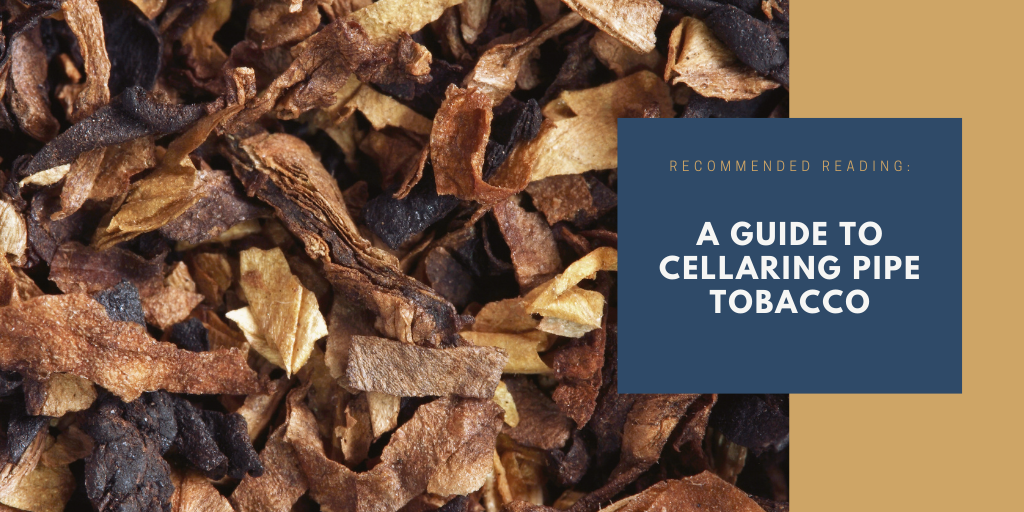
Whichever of these storage options you choose, you’re bound to keep your pipe tobacco in tip-top condition to ensure the perfect smoking experience every time.
Here at Havana House, we have a wide range of pipe tobacco available from some of the top brands including Ashton and Davidoff. Check out our full range of pipe tobacco here.
While we recommend trying various blends of pipe tobacco until you find a match, it does lead to one inevitable outcome; you’re going to end up with more tobacco than you can smoke.
Be it cigars, chewing or pipe, it’s essential to know how to store your collection properly. Otherwise, you could find yourself with deteriorated tobacco and a bank account that won’t thank you for it.
In this guide, we will be focusing on cellaring as a form of storing and ageing pipe tobacco.
Like wine in a cellar or cigars in a humidor, pipe tobacco needs to be stored in a carefully engineered and consistent environment to prevent it from degrading.
While there are various ways to store tobacco in the short term, cellaring is a process where tobacco can be stored for several years.
Much like pipe tobacco, cellaring is a highly personal process that depends highly on personal preferences. Almost every pipe tobacco enthusiast will have their own method of storing and cellaring their tobacco.
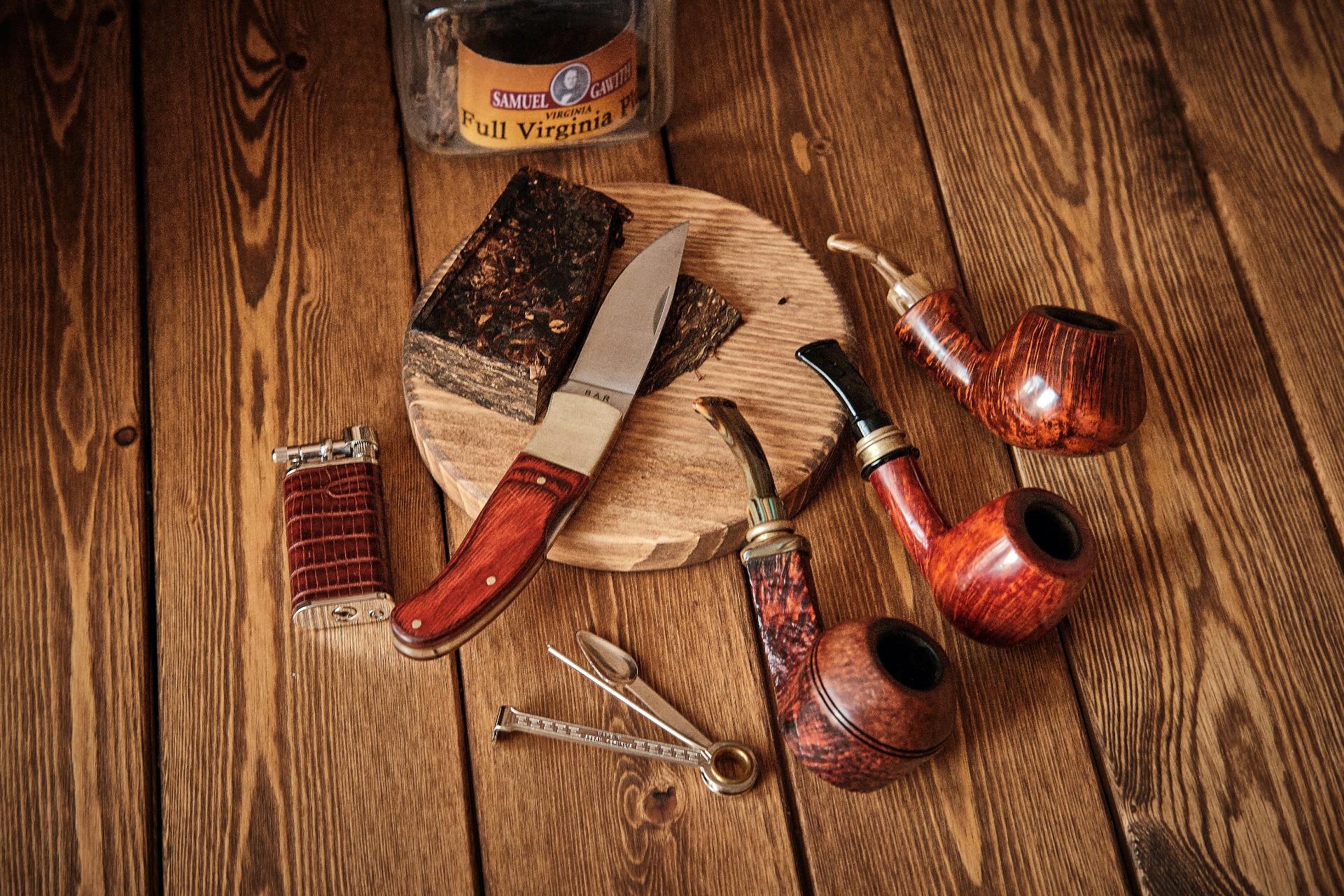
It’s all well and good for us to tell you to store your pipe tobacco in a complex and niche way, but you’re probably asking, ‘What’s the point’?
Pipe tobacco is made up of a blend of different tobacco varieties and, much like with a fine cheese or wine, only gets better with age. Over time, the blends slowly begin to marry, and the flavours fuse creating a blend that’s richer, mellower and all the more harmonious.
Cellaring your tobacco is the perfect process for pipe smokers who value the complexity of the flavour over the intensity.
As we’ve said, pipe tobacco comes in a vast variety of blends and flavours, and as such, it’s hard to define them as a whole.
While some of them significantly improve with time, there are some cases where the opposite is true, and ageing may actually harm tobacco. This is particularly likely with cased aromatic tobaccos that include large doses of other ingredients as part of the flavouring.
If you plan to age your tobacco, make sure you test it now and again to make sure you’re achieving a desirable result.
Thanks to its high sugar content, Virginia tobacco tends to improve the best with age.
This is because when properly preserved, the sugars undergo a chemical process, not unlike alcohol fermentation. You could store Virginia tobacco for pretty much an unlimited amount of time, and it’s just going to keep on getting better.
Tobaccos that are known for their pungent spices, like Latakia or Oriental varieties, can also improve greatly over time. As the tobacco ages, the flavours will become more refined and mellow, making for a more prestigious smoke.
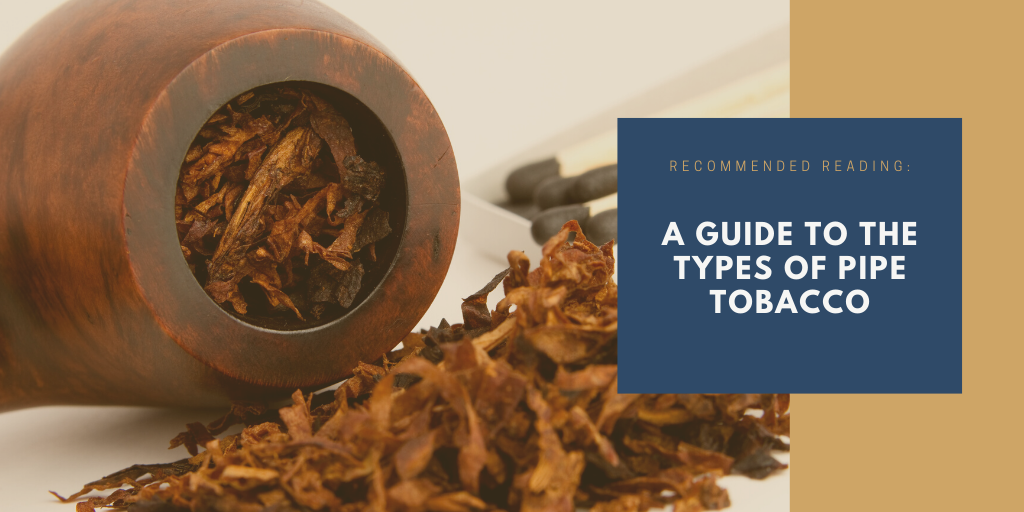
To properly age your tobacco, you need to keep it in optimal storage conditions. Tobacco can begin to deteriorate if the storage environment is even slightly off, which is disastrous if you’ve been trying to preserve and age it for several years.
As it’s sensitive to sunlight, tobacco should be stored in a dark place like a basement or cellar and ages best at consistent temperatures of 10°C (50°F) to 15°C (59°F).
As for humidity, this is more down to your individual tastes and the blend itself. Typically, it’s best to store your pipe tobacco somewhere between 55% RH to 75% RH.
When it comes to humidors, the consensus is that they’re designed to store tobacco at high humidity levels. While this is very much the case and the sole intention, that’s not to say they can’t be versatile.
Humidors can actually be calibrated to a relative humidity level of your choice, assuming you have the right tools.
So long are you’re not storing any cigars in there as well, humidors can make a perfectly suitable storage option for pipe tobacco.
The only issue is that ageing pipe tobacco is a process that tends to take a long time – years and years kind of long – and most humidors tend to require some maintenance. As such, this might not be the best choice, but it’ll do in a pinch.
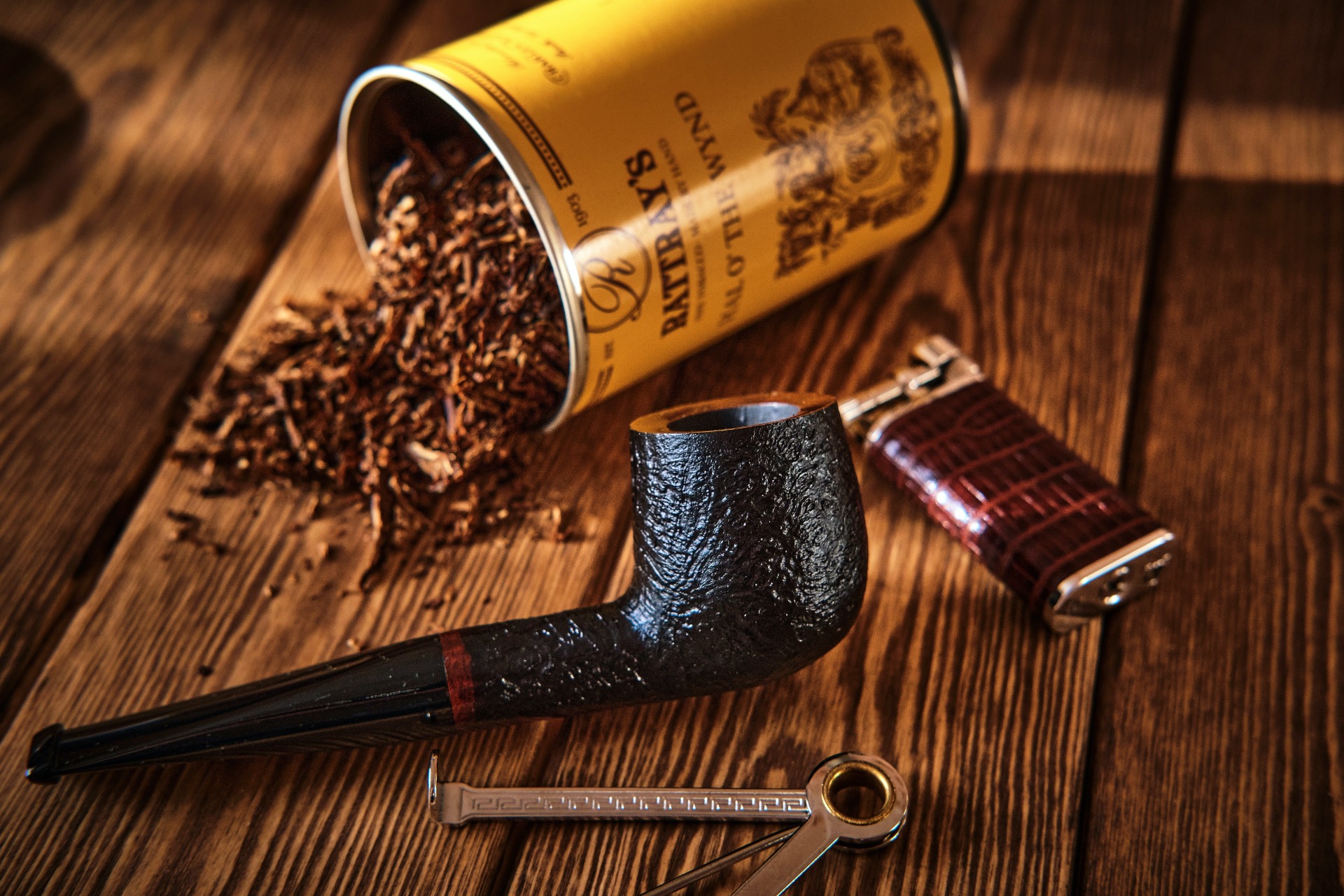
Most pipe tobacco is sold in a tin and sealed securely with plastic wrap to be airtight. If the seal is left unbroken, the tobacco can be stored as-is.
However, if the seal has been broken or your tobacco was sold in a pouch, you should transfer the tobacco to an airtight glass container.
If you’re familiar with tobacco storage, then chances are you’ve heard of a Tupperdor. This refers to using regular Tupperware as means of storing cigars when you don’t want to fork out for a humidor.
While a Tupperdor is an excellent option for holding tined or jarred tobacco in one place, it’s not recommended as a way to store loose tobacco – especially not for long periods.
Not only can the tobacco stain the Tupperware, but there can also be adverse chemical interactions when ageing plant matter in plastic.
If you need more space for cellaring your tobacco, then a better option may be a Coolidor. These are the same concepts as Tupperdors but on a larger scale.
Since they’re made from coolers, they also offer thermal insulations, which are particularly useful if your basement or chosen storage space suffers from temperature variations.
Coolidors are an exceptionally good choice because they offer your tobacco an extra level of protection against UV light and makes for an easier to maintain internal environment.
If you’re looking to expand your pipe tobacco collection, check out our extensive range available in our store now.

Similar to cigars, smoking a pipe is a blend of experiences that unfold to create what some would describe, as a ritual. The combination of flavours in the tobacco, the beauty of the pipe itself, and the relaxation that it exudes are only a few of the many factors as to why it is such a delicious delight to partake in.
However you prefer to enjoy your tobacco; whether you smoke cigars or pipe tobacco or maybe you favour a side of whisky while you puff, we’re sure you’ll find what you’re looking for here, at Havana House.
To celebrate our love of puffing pipes, we thought we’d share some of our favourite quotes about pipe smoking. In the spirit of our post, why not pack your pipe before we get started?

Edward Bulwer-Lytton, 1st Baron Lytton was an English writer and politician. From 1831 to 1941 he served as a Whig member in parliament. We have included one of his most famous quotes about pipes.
“A pipe is a fountain of contemplation, the source of pleasure, the companion of the wise; and the man who smokes, thinking like a philosopher and acts like a Samaritan.”

Unless you, yourself are a pipe smoker, most people are unaware of Albert Einstein’s love affair with pipes. The German theoretical physicist is usually associated with E=MC2, his hair, or of course, the theory of relativity.
But Einstein was a lover of pipes, even after his doctor insisted that he give up smoking due to health reasons, he still carried around his pipe to chew on.
Some suggest that smoking his pipe may have helped to support the evolution of his thoughts and theories.
“I believe that pipe smoking contributes to a somewhat calm and objective judgement in all human affairs.”

Knut Hamsun was a Norwegian writer of the mid-1800s. In 1920, he was awarded the Nobel Prize in Literature. His work spans over 70 years, one of his most popular pieces was the novel, Pan.
“There is nothing like being left alone again to walk peacefully with oneself in the woods, to boil one’s coffee and fill one’s pipe, and to think idly and slowly as one does it.”

The English essayist from London was born in 1775. He is best known for his Essays of Elia, Tales from Shakespeare and The Adventures of Ulysses. History is littered with his quotes about smoking a pipe, but we decided we would share our favourite.
“May my last breath be drawn through a pipe, and exhaled in a jest.”
For more information and advice regarding the finer things, such as pipes, whisky and cigars, you can browse through our blog posts. You can also find a vast array of our products here, at Havana House.
When smoking as a pastime, many will choose to use either cigars or pipe tobacco. Here at Havana House, we sell both cigars and pipes, allowing our customers to choose between two different forms of tobacco smoking.
Many cigar or pipe smokers will also indulge in the other from time to time, allowing themselves to enjoy the unique experiences that come from smoking cigars and pipes. But if you’re looking for the right option for you, you might be wondering which you should pick; cigars or pipes?
To help you answer this question, we take a look at some of the similarities and differences between pipes and cigars.
One of the key differences between the two forms of smoking is the type of tobacco used. This is largely down to the way the tobacco leaves are processed and cut.
For pipe tobacco, the leaves are usually finely cut so that it can be packed into the pipe’s bowl.
For cigars, the leaves are usually left whole. The filler leaf is concertinaed, bound by a binder leaf and then all held together with the wrapper leaf.
Tobacco for pipe smoking is grown all over the world, with North America and Turkey being two key locations.
There are two main classifications for pipe tobacco; Aromatic and Non-Aromatic). Aromatic tobacco offers a sweeter flavour profile, with an aromatic scent and taste. You’ll find flavours of tobacco such as chocolate, vanilla, rum and cherry.
Non-Aromatic tobacco offers earthier notes, with woody and spicy tastes commonly detected. As Non-Aromatic tobacco is less sweet and more earthy in aroma and flavour than Aromatic tobacco, it is usually considered to be more of an acquired taste.
Both Aromatic and Non-Aromatic pipe tobaccos are created using a blend of different types of tobacco. This includes Burley, Virginia, Cavendish, Latakia, Oriental and Perique. You can find out more about these in our full guide to the types of pipe tobacco.
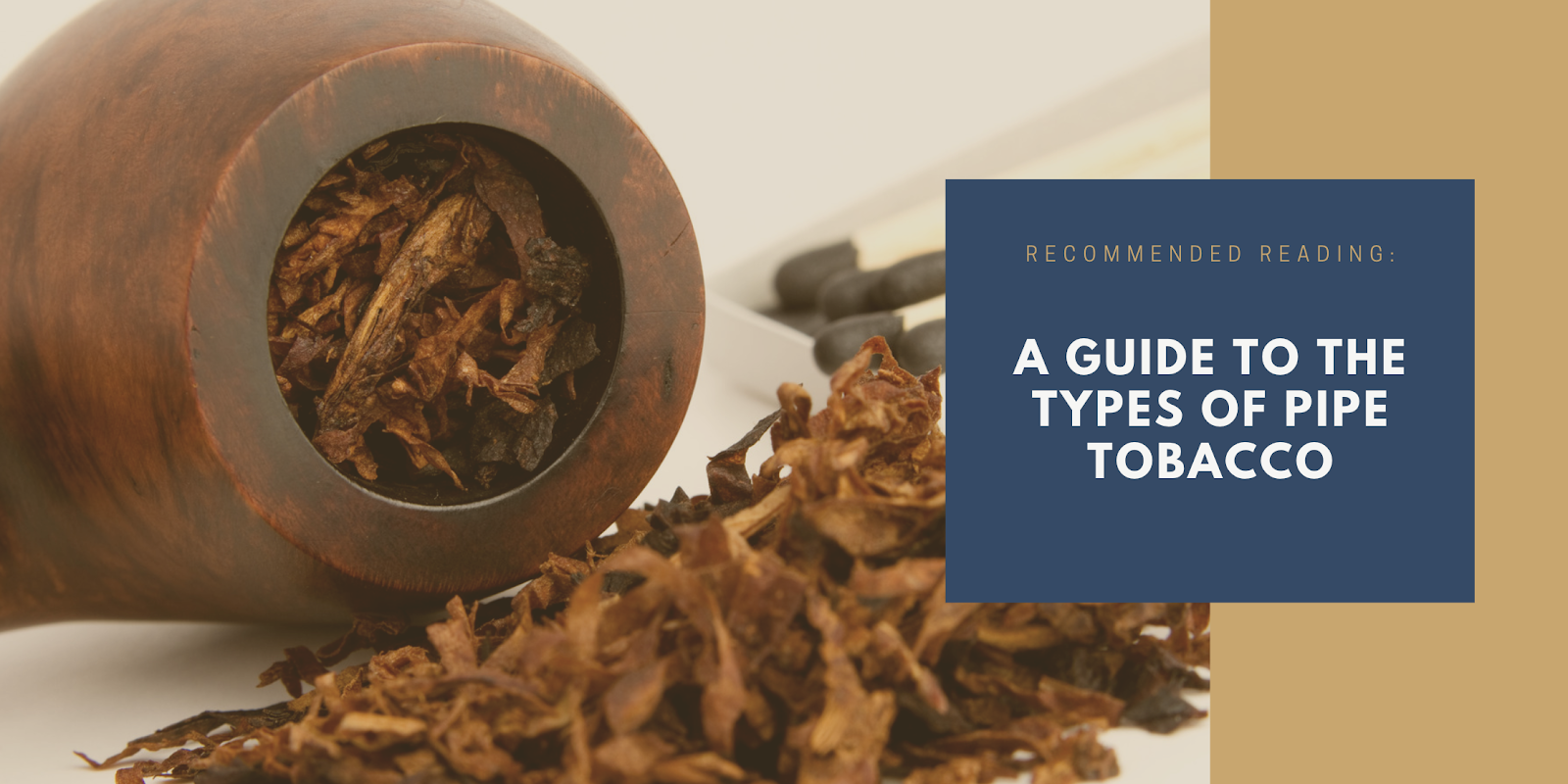
The tobacco used for cigars is primarily harvested in Central America and the Caribbean, with Cuba, Nicaragua, Honduras and the Dominican Republic being key players in the cigar industry.
There are many different varietals of cigar tobacco, including Corojo, Piloto, Habano, Connecticut Shade, Sumatra and Cameroon. There are also unique growing methods that impact on the flavour of the tobacco, such as shade growing.
The tobacco leaves are harvested and aged for long periods of time. For premium cigars, the tobacco will be left as whole leaves. Some cheaper or machine-made cigars may use cut tobacco for the filler. After the cigar is constructed, it will be left to age more, resulting in a flavourful and complex smoke.
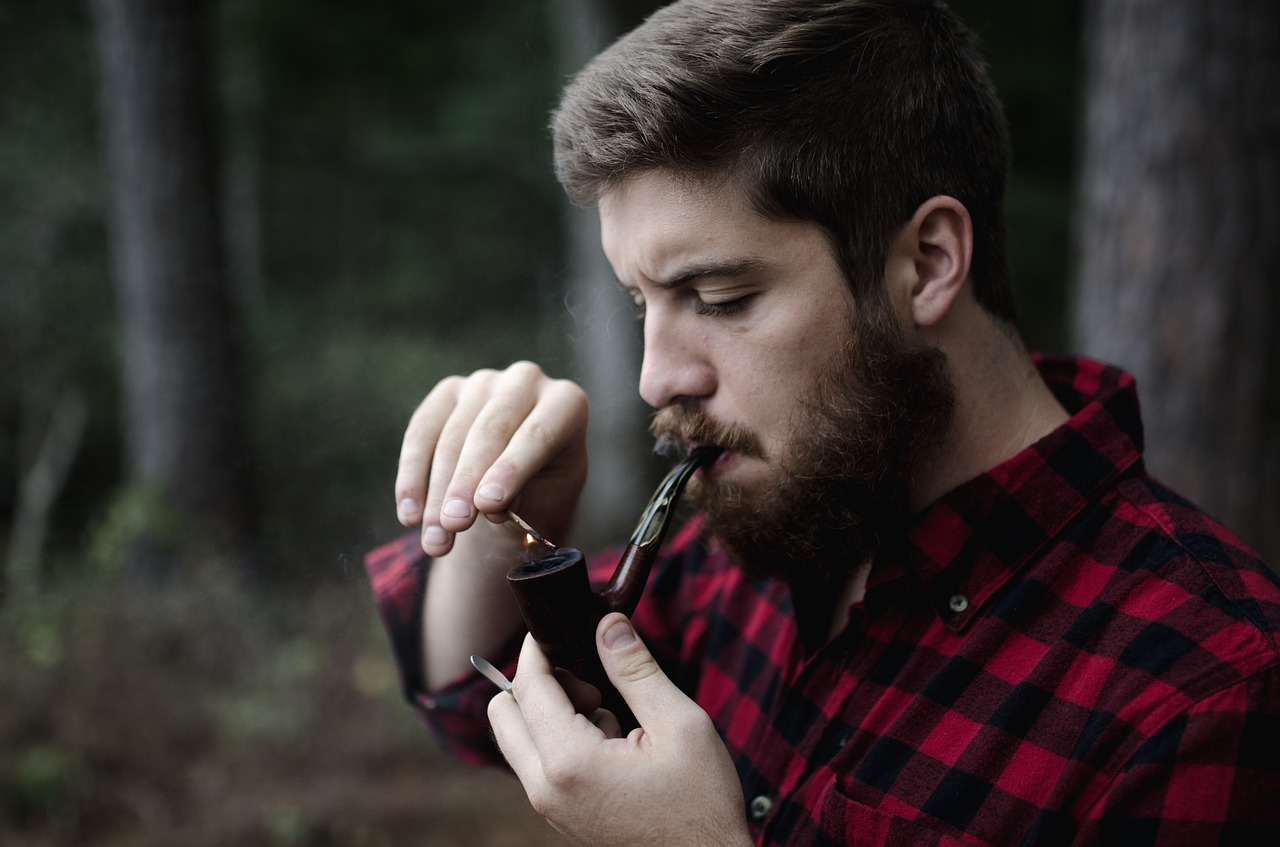
As we have established, pipe tobacco and cigar tobacco are grown and processed in different ways, using different tobacco varietals. But how does this translate to the way it is smoked? Here we explore the differences between smoking pipes and cigars.
Both cigars and pipes require a few preparation steps before they can be smoked.
To smoke a cigar, the cap needs to be cut at the head using a cigar cutter. The foot of the cigar must be toasted with a cigar lighter or match to light it.
During the smoke, you will need to puff on the cigar every couple of minutes to ensure that it doesn’t extinguish. Smoking too quickly can cause the cigar to burn too hot and fast. This can make the cigar burn unevenly and can create an unpleasant taste.
To smoke a pipe, the pipe must be packed with tobacco. This is quite a skilful task, as you don’t want the pipe packed too tight or too loose as this can affect your ability to successfully smoke it. The density of the packing will depend on the type of tobacco used and the moisture content of it.
When loaded, the bowl needs to be lit using a match or soft flame. The airflow must then be controlled with a pipe tamper or your thumb. Oxygen control is important in pipe smoking, as it is needed to keep the tobacco lit. As you smoke, you will need to tamp the tobacco to ensure the lit part comes into contact with unlit tobacco to keep it burning.
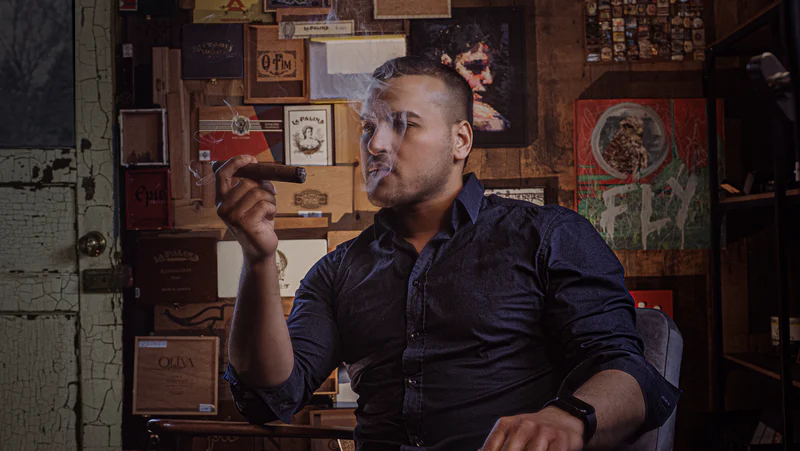
Another thing to consider is the taste differences of these two types of tobacco.
Cigars are designed to provide an incredible flavour. When a cigar manufacturer decides to produce a new cigar, years of planning, trialling and testing come into play before it is released for sale.
The precise flavours present will depend on a number of factors, including the type and combination of wrapper, binder and filler tobaccos used, and how long they were aged for.
The intensity of a cigar will depend on the length and ring gauge of the cigar. Shorter cigars will offer a quick punch of concentrated flavour, while longer cigars can be savoured as you experience the flavour gradually develop.
The taste of pipe tobacco is less considered than with cigars.
Your pipe smoking experience will greatly depend on the type of tobacco you choose to smoke, especially whether it is an Aromatic or Non-Aromatic type.
The tobacco taste you experience will also be impacted by what you have previously smoked in your pipe, as this can impart a flavour and aroma into the bowl of the pipe that can taint future smokes!
Both involve burning tobacco to experience aromas and flavours.
Both can be relaxing experiences that can take around an hour; a perfect armchair activity, or something to enjoy with friends.
Neither pipes nor cigars are inhaled. The smoke is simply puffed, and the aroma and flavour are enjoyed. Smoke may be held in the mouth and exhaled, but it isn’t drawn into the lungs.
We hope that this has explained some of the similarities and differences between pipe and cigar smoking. Each way has its own pros and cons in terms of ease and flavour, but the choice is ultimately up to you and your preferences.
The best way to find out your preference is to try! We have both cigars and pipe tobacco available here at Havana House.
